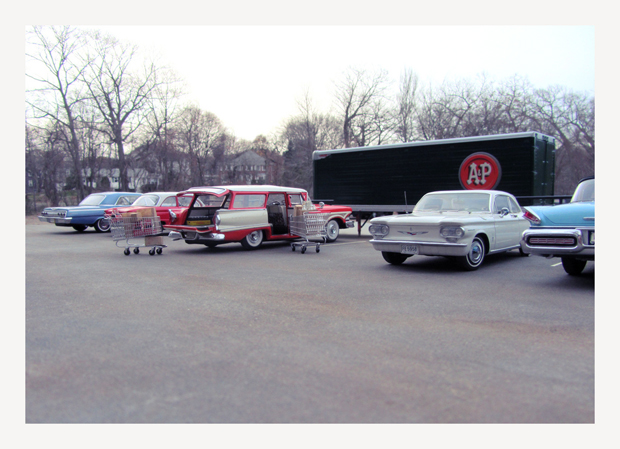
What is real and what is fake in this model town?
Photographer and model maker Michael Paul Smith has been photographing his own town for the last 25 years
Boston-based Michael Paul Smith has been photographing the town of Elgin Park for over 25 years. There's a drive-through theatre, lush green woodland; the neighbourhoods are well kept and the cars are all classics. It sounds like a great place to live, except there's only one problem, Elgin Park doesn't exist - it's fictional town has been created right down the last millimeter by Smith, who is also a professional model maker.
{media1}
Smith decided to build his first model when he wanted to display his 300-strong collection of die-cast cars in a more realistic context. "Starting with a gas station, because it's something universally connected with cars and trucks, it was just a matter of time before other structures started to be made" Smith says in an interview with photo site FStoppers. "Utilising all of the knowledge I had acquired from studying 20th century culture, these dioramas could be authentic down to the last detail."
The model-maker, who spends a few days constructing each photograph, has even invented stories that have led to the scenes in his images. One such story reads: "Terry Rotell, the lead singer of the rock and roll group, The Hotpoints, literally slipped into Elgin Park when his 1960 Thunderbird hit an icy patch out on the access road near the waterworks."
{media2}
Over the past quarter of a century, he's improved his photographic techniques. He's even taken to assembling his 1/24th scale cars and buildings beside real life streets, lakes and woodland around his own hometown.
Fooling the camera into making foreground objects look life sized is not a new technique - it was around long before CGI and was used in the early movie making of the 1920s. "Because it was too expensive to create massive full size sets outside, detailed models were created and placed at the correct distance behind the actors to create the illusion of a city or some fantasy location," Smith explains. "It was a very effective special effect. The use of models in cinema is still happening today. As a matter of fact, audiences are tiring of CGI and model making is having a resurgence."
{media3}
Read the full interview with FStoppers here and see all the photos on Smith's Flickr account along with his short stories about each scene here. For more more engaging photo projects, browse our photo books. To discover more personal art projects pursued outside of the art world, take a look at our Wild Art book. And to find out more about a moviemaker as keen on modeled special effects, as opposed to CGI, in our Tim Burton book. Buy them all from the people who made them, here.
{media4}